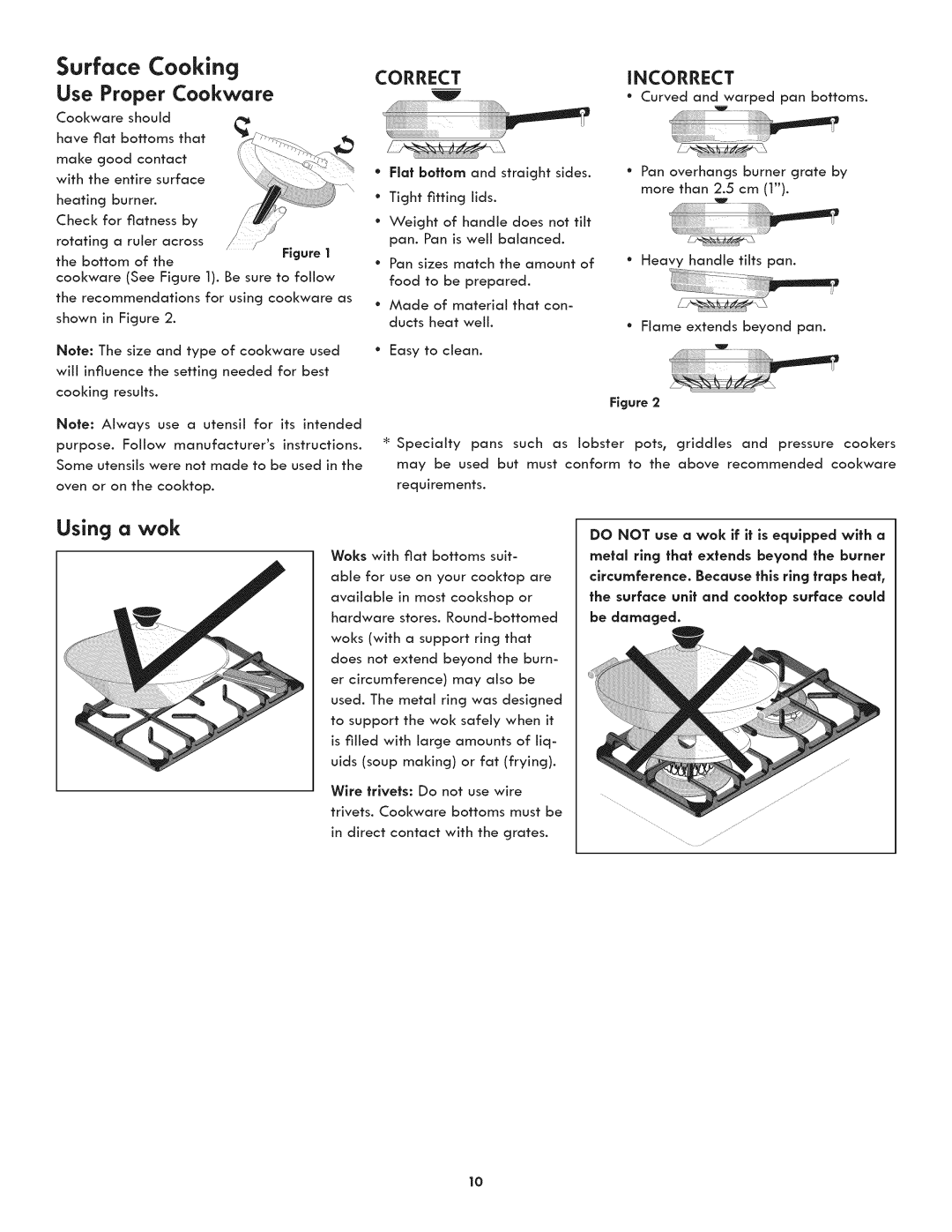
Surface Cooking
Use Proper Cookware
Cookware should
have flat bottoms that make good contact with the entire surface heating burner.
Check for flatness by rotating a ruler across
the bottom of theFigure 1 cookware (See Figure 1). Be sure to follow
the recommendations for using cookware as shown in Figure 2.
Note: The size and type of cookware used
will influence the setting needed for best
cooking results.
CORRECT
*Flat bottom and straight sides.
°Tight fitting lids.
°Weight of handle does not flit pan. Pan is well balanced.
°Pan sizes match the amount of food to be prepared.
°Made of material that con- ducts heat well.
Easy to clean.
INCORRECT
°Curved and warped pan bottoms.
IL......
°Pan overhangs burner grate by more than 2.5 cm (1").
°Heavy handle tilts pan.
°Flame extends beyond pan.
Figure 2
Note: Always use a utensil for its intended purpose. Follow manufacturer's instructions. Some utensils were not made to be used in the
oven or on the cooktop.
Specialty pans such as lobster pots, griddles and pressure cookers may be used but must conform to the above recommended cookware requirements.
Using a wok
Woks with flat bottoms suit-
able for use on your cooktop are
available in most cookshop or
hardware stores.
er circumference) may also be used. The metal ring was designed to support the wok safely when it is filled with large amounts of liq- uids (soup making) or fat (frying).
DO NOT use a wok if it is equipped with a metal ring that extends beyond the burner circumference. Because this ring traps heat, the surface unit and cooktop surface could be damaged.
Wire trivets: Do not use wire
trivets. Cookware bottoms must be in direct contact with the grates.
10
